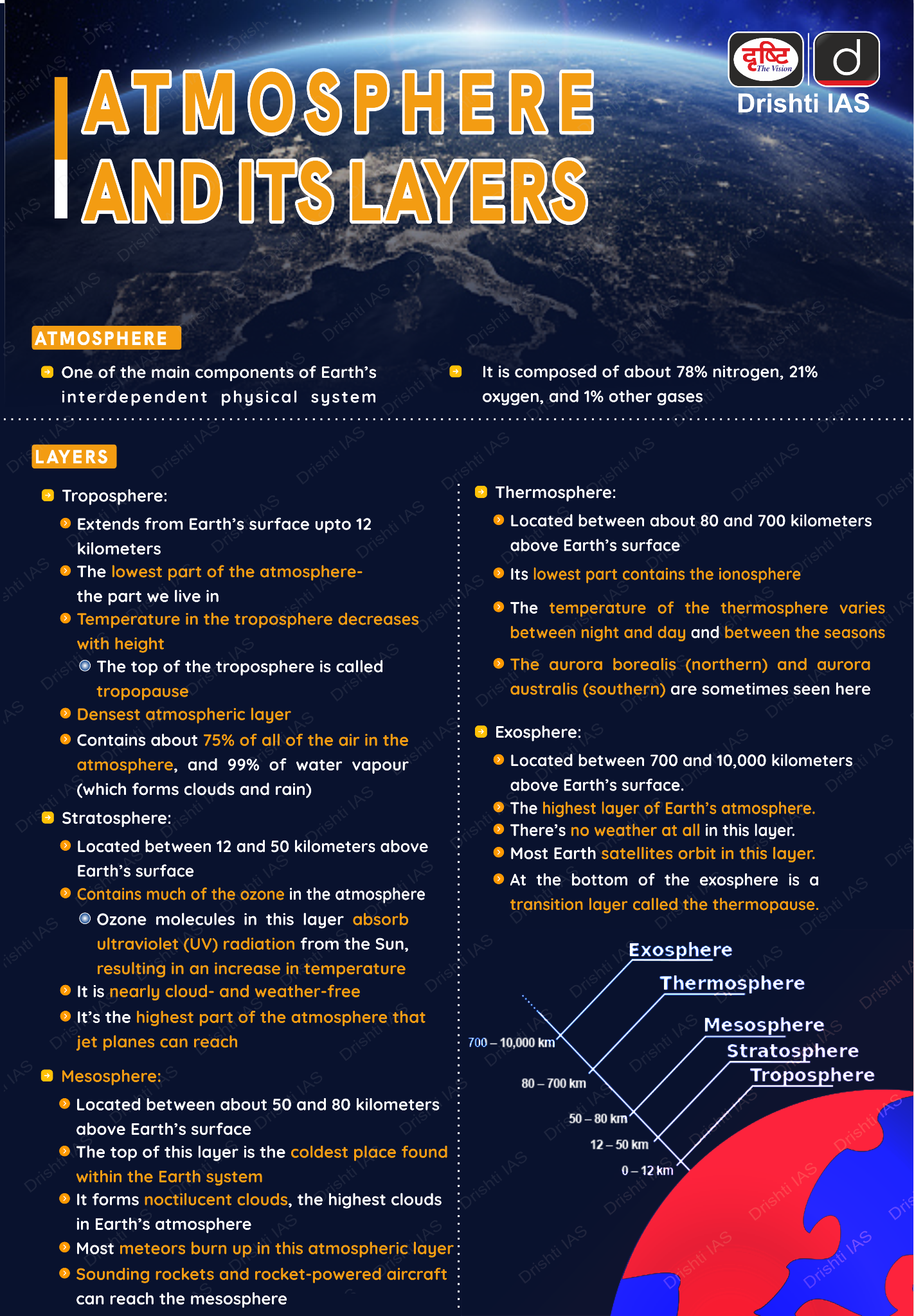Indian Equatorial Electrojet Model | 19 Nov 2024
Why in News?
Recently, scientists from the Indian Institute of Geomagnetism (IIG), Navi Mumbai have developed the Indian Equatorial Electrojet (IEEJ) Model to accurately predict the Equatorial Electrojet over the Indian sector.
- Ground-based magnetometers at Tirunelveli station, near India’s southern tip, are used for regular EEJ measurements.
What are the Key Facts About Equatorial Ionospheric Processes?
- Equatorial Electrojet: It is a concentrated, intense electric current flowing within the Earth's ionosphere at the geomagnetic equator at a height of around 105-110 km.
- India's southern tip is close to the Earth’s geomagnetic equator where a strong current exists.
- IEEJ Model Capabilities: It has a web interface that allows simulations of EEJ for different dates and solar activity conditions.
- Applications: The model helps in understanding equatorial ionospheric processes and has practical applications in several ways:
- Satellite orbital dynamics
- Global Navigation Satellite Systems (GNSS)-based navigation/positioning
- Satellite communication links
- Electrical power grids
- Transmission lines
- Oil and gas industry pipelines
Note:
- The geomagnetic equator is the midpoint between the magnetic north and south poles, running around the Earth.
- Unlike the geographic equator, it can shift and change position due to variations in the Earth's magnetic field.
Ionosphere
- It is not a distinct layer like the Troposphere or Stratosphere. Instead, the ionosphere overlaps the mesosphere, thermosphere, and exosphere.
- It’s a very active part of the atmosphere, and it grows and shrinks depending on the energy it absorbs from the sun.
- It is an electrically conducting region capable of reflecting radio signals back to Earth.
- The electrically charged atoms and molecules that are formed in this way are called ions, giving the ionosphere its name.
What is the Division of Atmosphere Based on Thermal and Chemical Composition?
- Thermal Composition of Atmosphere:
- Chemical Composition of Atmosphere: On the basis of chemical composition, the atmosphere is divided into two broad zones.
- Homosphere: Homosphere can be defined as the lowest part of the Earth's atmosphere. It lies between the heterosphere and the surface of the earth.
- It is the earth's atmosphere below the altitude of roughly 90 kms where there is an almost-homogenous composition of nitrogen (78%), oxygen (21%), argon (10%), carbon dioxide as well as traces of constituents like dust particles, aerosols and cloud droplets.
- It is divided into the Troposphere, Stratosphere and Mesosphere.
- Heterosphere: The atmosphere laying beyond the homosphere is termed as heterosphere. It extends from 90 km to 10,000 km.
- The air is rare and the molecules are wide apart. The mixing of the gases is not possible as the turbulence is not happening there.
- It is divided into two main spheres i.e., thermosphere and exosphere.
- Homosphere: Homosphere can be defined as the lowest part of the Earth's atmosphere. It lies between the heterosphere and the surface of the earth.
UPSC Civil Services Examination, Previous Year Question (PYQ)
Prelims
Q. Consider the following: (2013)
- Electromagnetic radiation
- Geothermal energy
- Gravitational force
- Plate movements
- Rotation of the earth
- Revolution of the earth
Which of the above are responsible for bringing dynamic changes on the surface of the earth?
(a) 1, 2, 3 and 4 only
(b) 1, 3, 5 and 6 only
(c) 2, 4, 5 and 6 only
(d) 1, 2, 3, 4, 5 and 6
Ans: (d)
Q. A layer in the Earth’s atmosphere called Ionosphere facilitates radio communication. Why? (2011)
- The presence of ozone cause the reflection of radio waves to Earth.
- Radio waves have a very long wavelength.
Which of the statements given above is/are correct?
(a) 1 only
(b) 2 only
(c) Both 1 and 2
(d) Neither 1 nor 2
Ans: (d)

